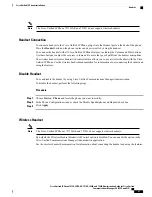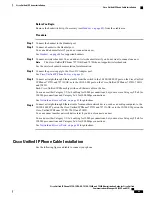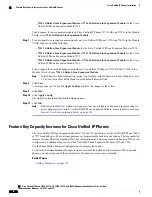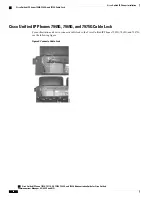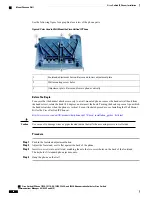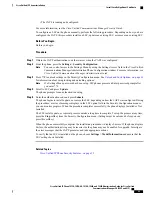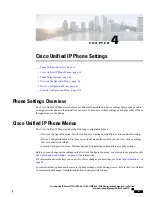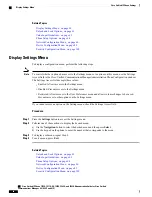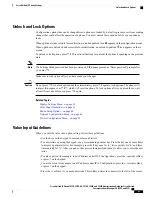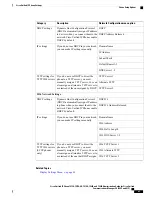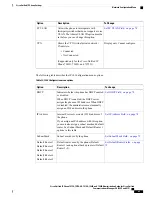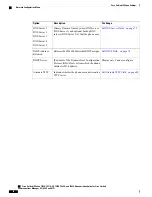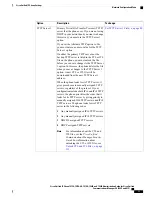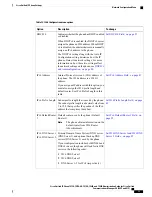
•
Softkeys
If the phone successfully passes through these stages, it has started up properly. If the phone does not start
up properly, see
Startup Problems, on page 215
.
Network Settings
If you are not using DHCP in your network, you must configure these network settings on the
Cisco Unified IP Phone after you install the phone on the network:
•
IP address
•
IP subnet information (subnet mask for IPv4 and subnet prefix length for IPv6)
•
Default gateway IP address
•
TFTP server IP address
You may also configure these optional settings as necessary:
•
Domain name
•
DNS server IP address
Related Topics
Cisco Unified IP Phone Settings, on page 61
Cisco Unified IP Phone Security
The security features protect against several threats, including threats to the identity of the phone and to data.
These features establish and maintain authenticated communication streams between the phone and the
Cisco Unified Communications Manager server, and digitally sign files before they are delivered.
For more information about the security features, see
Cisco Unified Communications Manager Security Guide
.
Related Topics
Cisco Unified IP Phone Security Features, on page 13
Install Locally Significant Certificate
You can initiate the installation of a Locally Significant Certificate (LSC) from the Security Configuration
menu on the phone. This menu also lets you update or remove an LSC.
Make sure that the appropriate Cisco Unified Communications Manager and the CAPF security configurations
are complete:
•
The CTL or ITL file should have a CAPF certificate.
•
On Cisco Unified Communications Operating System Administration, verify that the CAPF certificate
has been installed.
Cisco Unified IP Phone 7975G, 7971G-GE, 7970G, 7965G, and 7945G Administration Guide for Cisco Unified
Communications Manager 9.0 (SCCP and SIP)
58
Cisco Unified IP Phones Installation
Network Settings




